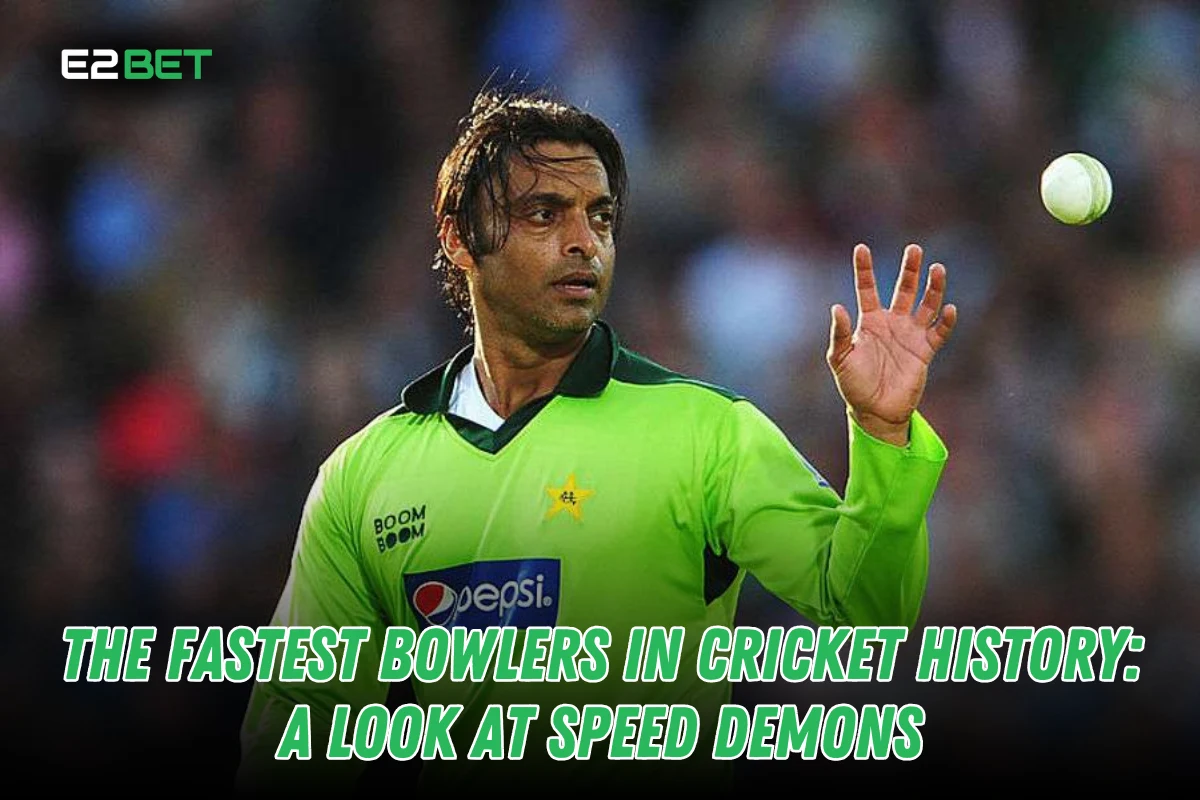Cricket has always been a game of skill, strategy, and endurance, but nothing electrifies fans more than raw pace. Over the years, some of the fastest bowlers in cricket history have sent shivers down the spines of batsmen with their sheer speed and aggression. These speed demons have not only broken records but have also shaped the art of fast bowling in cricket. Let’s explore the fastest deliveries in cricket history, their impact on the game, and what makes a truly great speedster.
What Makes a Great Fast Bowler?
Speed alone doesn’t define a legendary fast bowler. Several factors contribute to their success:
- Strength and Fitness: A fast bowler must maintain peak physical fitness to generate high speeds and avoid injuries. Fitness routines for fast bowlers focus on strength, flexibility, and endurance.
- Technique and Biomechanics: Proper wrist position, arm speed, and follow-through enhance both speed and accuracy. Cricket biomechanics studies show how small technical changes can improve performance.
- Mental Toughness: Fast bowling is as much a psychological battle as a physical one. A great bowler needs to intimidate batsmen while maintaining control over line and length.
Top Fastest Bowlers in Cricket History
Shoaib Akhtar – The Rawalpindi Express
Shoaib Akhtar holds the record for the fastest ball in cricket history, clocking 161.3 km/h (100.23 mph) against England in 2003. Known for his aggressive approach, Akhtar terrorized batsmen worldwide and remains one of the most feared fast bowlers in history.

Brett Lee – The Aussie Speedster
Australia’s Brett Lee bowling speed record stands at 161.1 km/h (100.1 mph). His deadly bouncers and pinpoint accuracy made him a nightmare for batsmen across all formats.
Shaun Tait – The Wild Thing
Matching Lee’s speed, Shaun Tait’s fastest ball was 161.1 km/h. His unorthodox action and unpredictable deliveries made him one of Australia’s most dangerous pacers.
Jeff Thomson – The Pioneer of Pace
In the 1970s, Jeff Thomson fastest ball was clocked at 160.6 km/h (99.8 mph). His slingy action and raw pace revolutionized fast bowling, paving the way for modern speedsters.
Mitchell Starc – Australia’s Modern Speedster
With a fastest delivery of 160.4 km/h (99.7 mph), Mitchell Starc fastest ball ranks among the best. He is one of the most consistent fast bowlers in the world today.
Dale Steyn – South Africa’s Speed King
Steyn combined express pace and swing, making him one of the best fast bowlers in cricket history. His lethal spells dismantled top batting line-ups across formats.
Kagiso Rabada – The Future of Fast Bowling
One of the top 10 fastest bowlers in the world, Rabada consistently bowls over 150 km/h. His aggressive style makes him a key player for South Africa.
Jofra Archer – England’s Speed Sensation
Archer’s effortless bowling speed measurement has reached over 155 km/h, making him one of the most dangerous modern-day bowlers. Jofra Archer fastest ball in IPL made headlines, proving his ability to dominate across all formats.
How Speed Affects Batsmen
Facing extreme pace is a daunting challenge for any batsman. Speed bowling techniques in cricket involve a combination of bouncers, yorkers, and sharp seam movement, making it difficult for batsmen to react. Some of the greatest duels in cricket history have featured fastest bowlers vs legendary batsmen, creating unforgettable moments.
Fastest Deliveries Ever Recorded in Cricket
- Shoaib Akhtar – 161.3 km/h (100.23 mph) (2003, vs England)
- Brett Lee – 161.1 km/h (100.1 mph) (2005, vs New Zealand)
- Shaun Tait – 161.1 km/h (100.1 mph) (2010, vs England)
- Jeff Thomson – 160.6 km/h (99.8 mph) (1975)
- Mitchell Starc – 160.4 km/h (99.7 mph) (2015, vs New Zealand)
The Future of Fast Bowling
With advancements in sports science and technology, can a bowler cross 170 km/h in the future? Many experts believe it is possible with improved training methods and better understanding of bowling biomechanics. Fast bowling coaching courses and modern fitness programs are helping young pacers achieve new speed benchmarks.
Conclusion
The thrill of fastest bowlers in international cricket continues to excite fans worldwide. From Shoaib Akhtar’s legendary pace to the rising stars like Rabada and Archer, fast bowling remains one of the most exhilarating aspects of cricket. As technology and training evolve, we may soon witness a bowler breaking the 105 mph barrier.
FAQs
Q1. Who is the fastest bowler in cricket history?
Ans. Shoaib Akhtar holds the record for the fastest ball in cricket, clocking 161.3 km/h.
Q2. What is the highest recorded speed in cricket?
Ans. The highest officially recorded bowling speed is 161.3 km/h by Shoaib Akhtar.
Q3. Who are the best fast bowlers of all time?
Ans. Some of the greatest fast bowlers include Shoaib Akhtar, Brett Lee, Jeff Thomson, Dale Steyn, and Mitchell Starc.
Q4. Can a bowler cross 170 km/h in the future?
Ans. With advancements in fitness training for fast bowlers and biomechanical improvements, a bowler might break the 170 km/h barrier in the future.
Q5. How is bowling speed measured in modern cricket?
Ans. Bowling speed is measured using radar guns, Hawk-Eye technology, and advanced sports analytics.